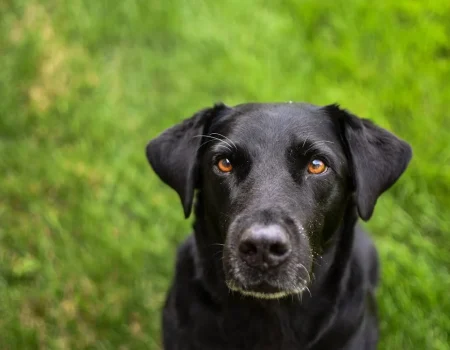Dragonflies are one of the most fascinating insects found in the world. With their delicate wings, colorful bodies, and unique flying abilities, they are often admired for their beauty and grace.
However, like all living creatures, dragonflies have a lifespan, and at times, they may become ill or injured. As nature enthusiasts, it’s important to know how to identify when a dragonfly is dying and understand how to provide them with the best care possible.
In this article, we’ll explore the signs that indicate that a dragonfly is dying and tips on what you can do to help. So, if you’re just curious about these remarkable insects, read on to learn more.
Read Also: Can Bearded Dragons Eat Mint? Hidden Fact!
9 Signs of a Dying Dragonfly

If you observe any of these signs in a dragonfly, it’s important to handle the situation with care and seek help from a professional if necessary. How can you tell if a dragonfly is dying? Here are some signs to look out for:
1. Inactivity
If you come across a dragonfly that is not moving or flying around, it could be a sign that it’s not feeling well. Dragonflies are active insects that are usually on the move, so a lack of activity is cause for concern.
2. Weakness
A dragonfly that appears weak or slow in its movements could be a sign that it’s not feeling well. If you notice a dragonfly that seems to be struggling to move or fly, it may be in distress.
3. Uncoordinated Movements
Dragonflies are typically swift and agile in their movements, so if you notice a dragonfly that is having trouble coordinating its movements or seems to be struggling to fly properly, this could be a sign that it’s in distress.
A common indicator of a dying dragonfly is the curling of its legs towards its body and minimal movement of its wings. If the legs are curled and the wings are not moving, it may suggest that the dragonfly is in distress or nearing death.
4. Difficulty Flying
If a dragonfly is having trouble staying in the air or seems to be crashing or falling, this is a clear indication that it may be dying. Dragonflies rely on their ability to fly to find food and mates, so difficulty flying is a serious issue for them.
5. Abnormal Wing Position
A dragonfly with wings that are not in their normal position could be a sign that it’s injured or ill. For example, if one wing is drooping or not fully extended, this could indicate a problem.
6. Discoloration or Dullness
A dragonfly that appears discolored or dull in color could be a sign that it’s not healthy. Healthy dragonflies have bright, iridescent colors, so a lack of color or dullness could indicate a problem.
7. Lack of Appetite
If you notice a dragonfly that is not eating or appears to have lost its appetite, this could be a sign that it’s in distress. Dragonflies have a voracious appetite and typically feed on small insects, so a lack of appetite is a clear indication that something is wrong.
8. Breathing Difficulties
A dragonfly that is having trouble breathing or appears to be gasping for air is likely in distress. Difficulty breathing can be caused by a number of factors, including injury or illness, and is a serious issue for dragonflies.
Dragonflies breathe through spiracles located along their abdomen. A dying dragonfly may exhibit decreased abdominal pulsation, which can be observed as a lack of movement in the abdomen. Conversely, if the abdomen is pulsing, it may indicate that the dragonfly is still alive and attempting to breathe.
9. Drying out
Dragonflies need water to survive, and if they are unable to access it, they may become dehydrated and begin to dry out. A dragonfly that appears to be dried out or shriveled could be in distress and in need of immediate assistance.
Read Also: How Long do Bearded Dragons Live
Possible Causes of a Dragonfly Death
Dragonflies, like all living organisms, can die for a variety of reasons. Here are some possible causes of death for dragonflies:
1. Natural Causes
Just like any other animal, dragonflies can die of natural causes. This may include old age or illness, which can weaken the dragonfly and make it more susceptible to predators or other threats.
2. Human-related Causes
Unfortunately, human activity can also contribute to the death of dragonflies. Here are some examples:
Habitat Loss
Dragonflies rely on aquatic habitats for their survival, and habitat loss due to human development can be a major threat to their populations. When wetlands are drained or paved over, dragonflies lose their breeding grounds and food sources.
Pollution
Water pollution can be a major problem for dragonflies, as it can harm their eggs, larvae, and adults. Pesticides and other chemicals can also be toxic to dragonflies, and can accumulate in their bodies over time.
Climate Change
Climate change is affecting ecosystems all over the world, and dragonflies are not immune to its effects. Changes in temperature and precipitation patterns can alter the timing of dragonfly emergence and breeding, which can affect their survival.
See also: Why Is My Bearded Dragon Sleeping So Much?
What to do If you Find a Dying Dragonfly
If you come across a dying dragonfly, here are a few things you can do to help:
1. Handle it with care
Dragonflies are delicate creatures, and it’s important to handle them with care. If you need to pick up a dragonfly, try to do so gently and avoid touching its wings, as this can damage them. It’s also important to avoid using any chemicals or pesticides on the dragonfly, as this can further harm it.
2. Provide Water
If you find a dragonfly that appears to be dehydrated, you can offer it a small dish of water. Make sure the water is clean and free of any chemicals, and place the dragonfly near the water so it can drink if it wants to.
3. Offer a Safe Place
If the dragonfly is still alive but appears weak or unwell, you can offer it a safe place to rest. This could be a shady spot with some vegetation for cover, or a small container with some water and leaves for the dragonfly to rest on.
4. Seek Professional Help
If you’re unsure about how to help the dragonfly, or if it appears to be seriously injured or ill, you may want to seek the help of a professional. This could be a local wildlife rehabilitator, a veterinarian who specializes in exotic pets, or an insect expert who can advise you on how to care for the dragonfly.
Note: While it’s important to help animals in need, it’s also important to do so in a responsible and safe way. Always be cautious when handling wildlife, seek the advice of experts if you’re unsure about what to do.
Dragonflies typically have a short lifespan ranging from 6 months to 7 years, depending on the species. As they age, their physical condition can deteriorate, leading to signs of dying such as reduced activity and responsiveness.
Read Also: What are the Different Types of Poultry Farming Systems and Which One to Choose?
Frequently Asked Questions
If you find a dying dragonfly, you can try to help it by handling it with care, providing water, offering a safe place to rest, and seeking professional help if needed.
Some signs that may indicate a dragonfly is dying include inactivity, weakness, uncoordinated movements, difficulty flying, abnormal wing position, discoloration or dullness, lack of appetite, breathing difficulties, and drying out.
Natural causes of dragonfly deaths can include old age, disease, predation, and environmental factors such as drought, floods, and extreme temperatures.
Human-related causes of dragonfly deaths can include habitat destruction, pollution, and the use of pesticides and other chemicals.
Conclusion
There are several signs that may indicate a dragonfly is dying. This includes inactivity, weakness, abnormal wing position, and difficulty flying. Dragonflies also play an important role in the ecosystem. They are predators of mosquitoes and other insects, and serve as a food source for birds and other animals. By taking care of the environment and reducing our impact on their habitats, we can help to prevent dragonfly deaths and protect these important creatures.
References
How to Help a Dragonfly with a Broken Wing
How to Bring a Dragonfly Back to Life
Caring for Injured/Flightless Adult Dragonflies
Dragonfly Emergence – The Dragonfly Woman
Disclaimer
This content on Bagrica is for informational purposes only. Consult a professional for pet care or farming advice. Bagrica is not liable for any actions taken based on this information.







No Comment! Be the first one.